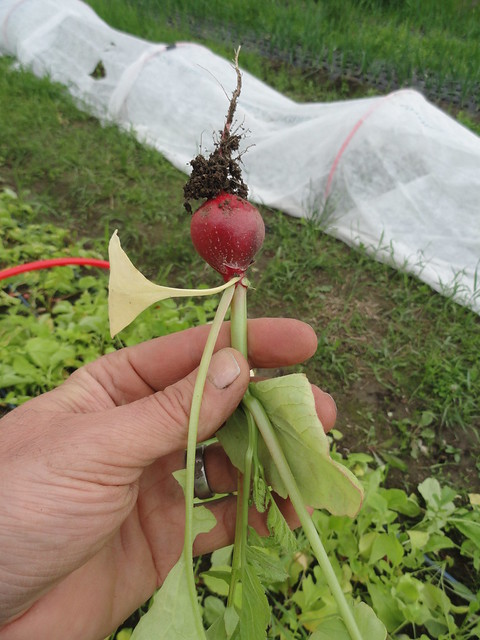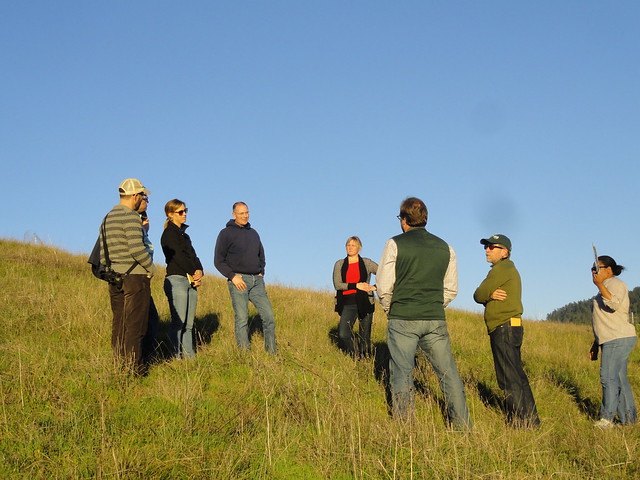
The U.S. Department of Agriculture’s Natural Resources Conservation Service (NRCS) is the nation’s largest funder of conservation on private land. For decades, NRCS staff have worked hand-in-hand with America’s farmers, ranchers and forest landowners to provide hundreds of millions of dollars in funding and technical assistance, delivering valuable practices like cover crops, no-till, windbreaks, grazing management strategies and manure management facilities. Despite these efforts, less than ten percent of our nation’s working lands receive NRCS assistance in any given year. NRCS is constantly trying to close this gap, expanding the reach of its programs through innovative grant programs like the Conservation Innovation Grants (CIG) and the Alternative Funding Arrangement component of the Regional Conservation Partnership Program (RCPP AFA). Moreover, in recent years, the agency has begun exploring conservation finance as a new tool to deliver support for a diverse array of projects, benefiting a larger percentage of farmers, ranchers and private forest landowners.
“Conservation finance utilizes NRCS conservation delivery tools like conservation practices technical service providers and producer incentives to help advance the agency’s conservation mission,” said Kari Cohen, Projects Branch Chief. “We recognize that there are physical limits to the amount of conservation that NRCS can deliver in any given year. Through conservation finance and strategic partnerships, we feel confident that we can get more conservation on the ground while delivering on our Farm Bill commitments.”

Conservation finance and conservation partnerships have become an increasingly popular tool for NRCS and private investors alike. Worldwide, investments in ecosystem services and natural capital were valued at over $8 billion in 2017, according to a study from Forest Trends. There is enormous potential for conservation finance to serve as a mechanism for building a more resilient and profitable society.
Since 2016, NRCS’s Conservation Innovations Team has focused their energy on seizing these opportunities, utilizing grant programs to increase the flow of capital into conservation finance projects aimed at assisting America’s agricultural producers and rural economies.
Recently, a new report from CIG partners, the Environmental Defense Fund and Climate and Forest Capital, was released titled Catalytic Capital and Agriculture: Opportunities to Invest in Healthy Soils, Resilient Farms and a Stable Climate. The report, which was funded through NRCS’s CIG program highlights innovative ways that early investments in conservation finance projects can help jumpstart sustainable agricultural practices across the country, creating the necessary conditions for environmental markets to takeoff and become self-sustaining. The publication lays out a strategy for how early funding can catalyze impact-driven investment that would not have happened without the intervention of this “catalytic” capital. The report emphasizes that while America’s farmers and ranchers are successfully feeding the world, the U.S. agricultural sector can also help solve some of our Nation’s most challenging environmental problems.
While there are some significant market and consumer trends that are nudging producers to adopt more sustainable and regenerative management practices, in many cases the market demand is outpacing the ability of agricultural producers to implement the necessary changes or manage the risk of change. Much like a rocket ship that needs a boost of jet fuel to liftoff, catalytic capital can help conservation finance projects get off the ground.

An apt example exists in the market for organic agriculture. There is ample demand for certified organic foods, and American farmers that switch from conventional to USDA certified organic methods of production stand to benefit from higher profit margins, as organic products carry significant market premiums. However, farmers that want to transition to USDA Certified Organic face significant challenges, specifically in the form of a three-year transition period during which they cannot use traditional agricultural practices but also cannot label their produce as organic. During this period, farmers are likely to experience yield losses without receiving higher revenues from certified organic sales. This leads many farmers to be wary of taking on the risk of short-term loss for the potential of longer-term gains.
Catalytic capital can help organic farmers with the transition years if the farmer is willing to share some of the long-term benefits of the higher-valued organic sales with the catalytic capital investors. This financial model helps farmers and ranchers have access to investment capital and business strategies, while providing investors with an opportunity to put money to work in accomplishing conservation priorities.
The Catalytic Capital and Agriculture report highlights a CIG-funded project known as the Perennial Fund, which is piloting a novel financing strategy that supports farmers in their transition to organic agriculture. The fund, which is run by Mad Agriculture, offers small- to mid-size farms a 10-year organic transition loan. The structure of the loan is such that repayment only begins once farmers begin to make a profit, with a buffer built in to protect against bad weather or poor market conditions, meaning that risk is shared between investors and farmers. The farmers are expected to pay 1.5 times the initial investment after 10 years.
“Conventional industrial agriculture is one of the biggest contributors to the climate and health issues we face,” notes Birgit Cameron, head of Patagonia Provisions. “Giving farmers a path towards a switch to organic and regenerative organic practices is vitally important for our health, the health of farm workers, and the health of our planet.”
In conjunction with running the Perennial Fund, Mad Agriculture is providing farmers with technical support, assisting in connecting buyers with producers, and providing the opportunity for participating farmers to voluntarily participate in evolving carbon markets, which may eventually prove to be another revenue stream for loan repayment. The goal of the project is ultimately to create the necessary structure and knowledge for transition financing, so that this sort of loan becomes attractive to impact investors (or even traditional investors). The CIG funding from NRCS, an investment from the Patagonia Clothing Company, and other investments have enabled Mad Ag to design and launch a pioneering model for investing in the expansion of organic and regenerative farming in the U.S.
The EDF report goes on to identify several other promising areas where early-stage capital investments might be most effective in boosting sustainable land management practices, including regional value chain transformation and ecosystem services marketplaces. As in the case of the Perennial Fund, early investments into these spaces may provide the necessary structure and knowledge to help more traditional conservation finance projects target the sustainable agriculture space. Ultimately delivering more conservation on the ground.
“These investments will help farmers and ranchers get more conservation on the ground, which is the priority of this NRCS Conservation Finance CIG project,” said NRCS Acting Chief Kevin Norton. “Voluntary conservation practice implementation can benefit when investor priorities and agricultural producer priorities align.”
“Emerging innovations can help provide a business case for NRCS conservation practices, the economics of regenerative agriculture and sustainable supply chain initiatives that will help deliver innovative agricultural solutions to our nation’s largest environmental challenges while delivering a more resilient food system,” Norton said. “The findings of this report can inform a more strategic and effective use of catalytic capital to build agricultural resilience in the U.S. and beyond.”
Learn more at the NRCS Environmental Markets and Conservation Finance Website.
Read more about the Conservation Innovation Grants program and the Regional Conservation Partnership Program.


